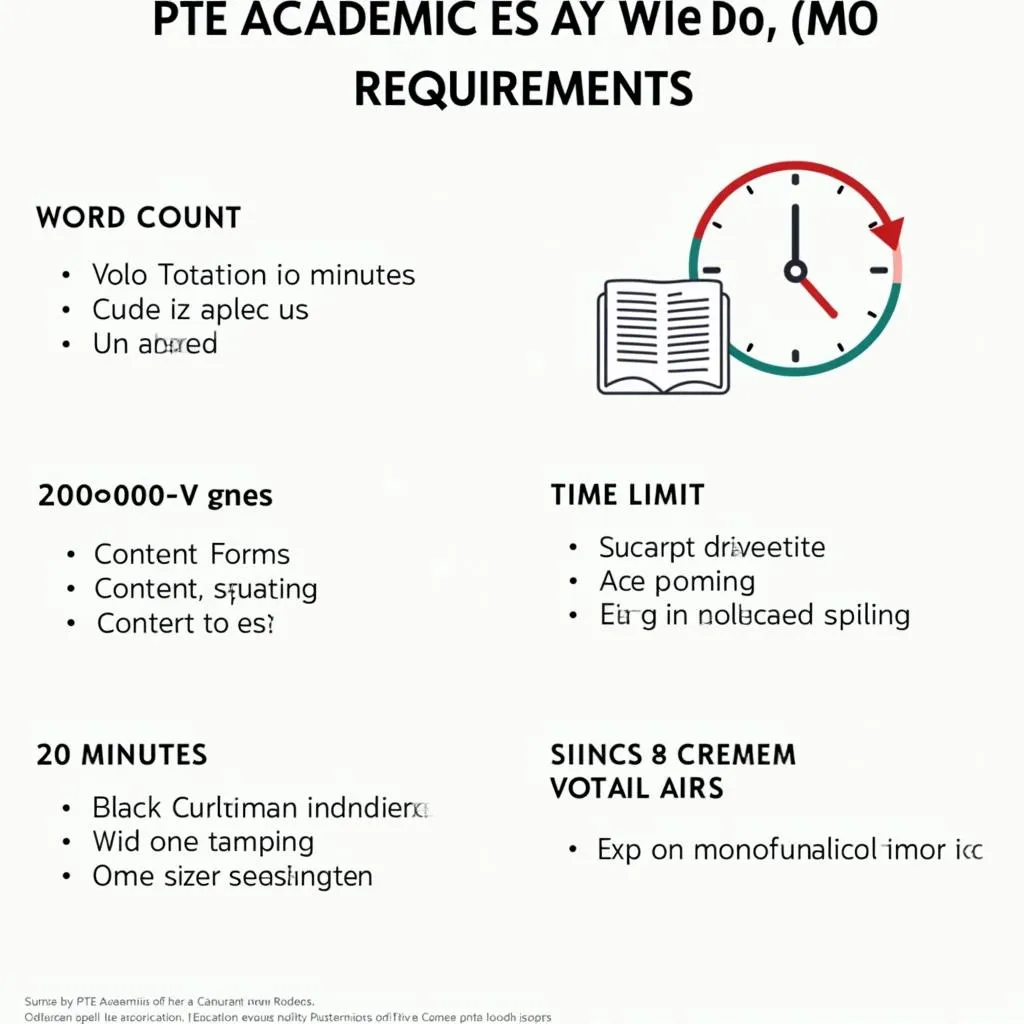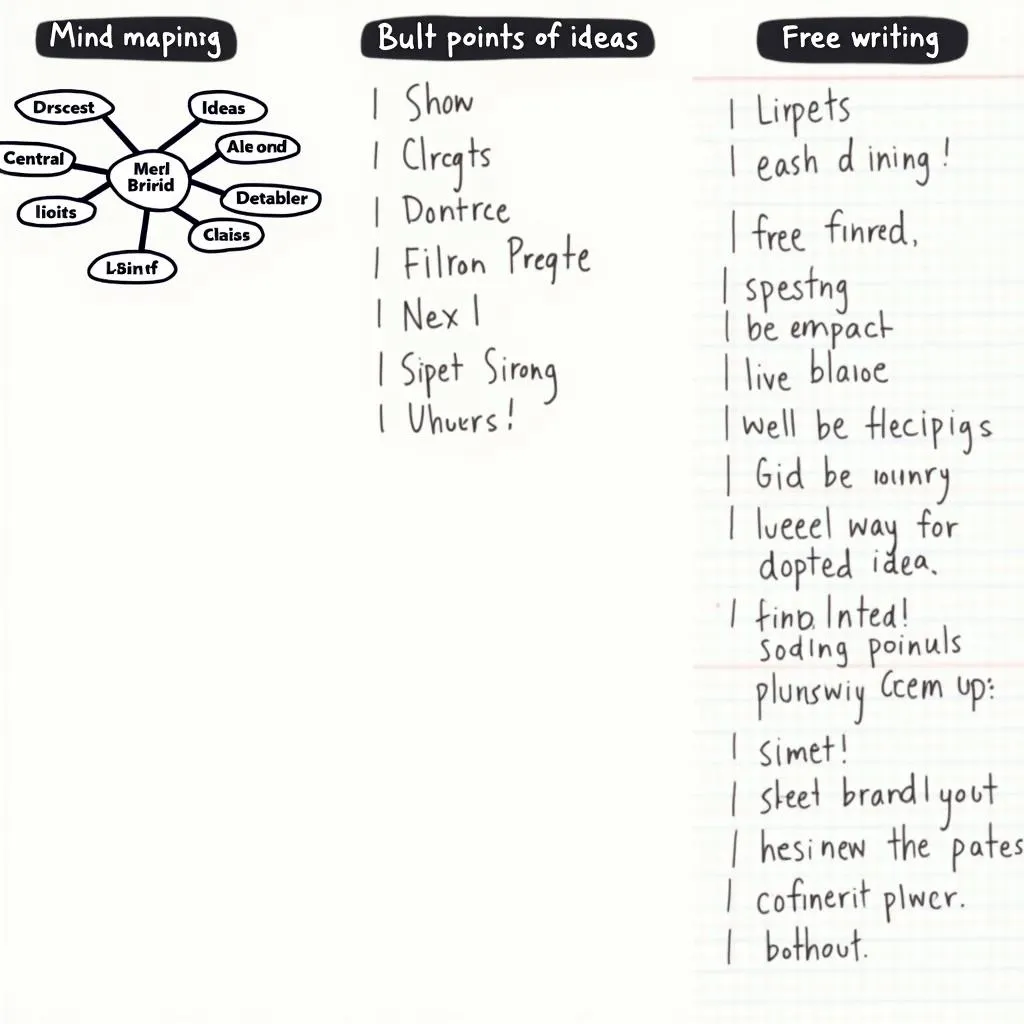Writing essays in the PTE Academic test can be challenging, but with the right planning techniques, you can significantly improve your performance. This guide will walk you through effective PTE Essay Planning Techniques to help you achieve your desired score.
Understanding the PTE Essay Task
Before diving into planning techniques, it’s crucial to understand what the PTE essay task entails. The essay section of the PTE Academic test requires you to write a 200-300 word response to a given prompt within 20 minutes. This task assesses your ability to organize ideas coherently and express them in clear, accurate English.
 PTE Academic Essay Task Overview
PTE Academic Essay Task Overview
The Importance of Essay Planning
Proper planning is essential for crafting a well-structured and coherent essay. It helps you:
- Organize your thoughts
- Develop a clear argument
- Manage your time effectively
- Reduce stress during the writing process
As Dr. Emma Thompson, a renowned PTE preparation expert, states, “A well-planned essay is half-written. Taking a few minutes to outline your ideas can make a world of difference in your final score.”
Key PTE Essay Planning Techniques
1. Analyze the Prompt (2-3 minutes)
Start by carefully reading and understanding the essay prompt. Identify the key elements:
- Topic
- Task (agree/disagree, discuss, etc.)
- Any specific instructions
Pro Tip: Underline or circle important words in the prompt to ensure you address all aspects of the question.
2. Brainstorm Ideas (3-4 minutes)
Quickly generate relevant ideas and examples related to the topic. Use these techniques:
- Mind mapping
- Listing
- Free writing
 PTE Essay Brainstorming Techniques
PTE Essay Brainstorming Techniques
3. Create a Basic Outline (2-3 minutes)
Organize your ideas into a simple structure:
- Introduction
- Hook
- Thesis statement
- Body paragraph 1
- Main idea 1
- Supporting details
- Body paragraph 2
- Main idea 2
- Supporting details
- Conclusion
- Restate thesis
- Final thoughts
4. Develop Your Thesis Statement (1-2 minutes)
Craft a clear, concise thesis statement that directly addresses the prompt and outlines your main arguments.
Example: “While social media has revolutionized communication, its negative impacts on mental health and privacy outweigh its benefits.”
5. Plan Your Time (1 minute)
Allocate your remaining time:
- Introduction: 3-4 minutes
- Body paragraphs: 5-6 minutes each
- Conclusion: 2-3 minutes
- Proofreading: 1-2 minutes
Remember: Stick to your time plan to ensure you complete all sections of your essay.
Implementing Your Plan
Once you’ve completed your planning, it’s time to start writing. Keep these tips in mind:
- Stick to your outline, but be flexible if new ideas arise
- Use clear topic sentences for each paragraph
- Maintain coherence with appropriate transition words
- Support your arguments with relevant examples
Dr. Sarah Lee, a PTE writing instructor, advises, “While following your plan is important, don’t be afraid to adjust if you think of a stronger point during writing. The key is to maintain overall structure and coherence.”
Common Pitfalls to Avoid
When planning your PTE essay, be wary of these common mistakes:
- Spending too much time planning and not leaving enough for writing
- Straying from the topic or misinterpreting the prompt
- Failing to provide specific examples to support your arguments
- Neglecting to plan for a strong conclusion
By avoiding these pitfalls, you’ll be better positioned to write a high-scoring essay. For more tips on avoiding common PTE writing mistakes, check out our guide on how to practice writing quickly for PTE.
Practicing Your Planning Skills
To improve your essay planning techniques, regular practice is essential. Here are some strategies:
- Time yourself while planning for various essay prompts
- Review and refine your planning process after each practice session
- Seek feedback from peers or tutors on your essay plans
- Analyze high-scoring PTE essay samples to understand effective planning
 PTE Essay Planning Practice Session
PTE Essay Planning Practice Session
For a comprehensive approach to PTE preparation, including essay planning, consider following our PTE study plan for working professionals.
Conclusion
Mastering PTE essay planning techniques is crucial for success in the writing section of the test. By following these strategies and practicing regularly, you’ll be well-equipped to tackle any essay prompt with confidence. Remember, effective planning leads to clearer writing and higher scores.
To further enhance your PTE performance across all sections, don’t forget to review our PTE exam tips for high-band scores.
FAQs
-
How long should I spend planning my PTE essay?
Aim to spend about 5-7 minutes planning your essay, leaving enough time for writing and proofreading. -
Is it necessary to write a full outline during planning?
A basic outline is sufficient. Focus on organizing your main ideas and key supporting points. -
What if I can’t think of enough ideas during planning?
If you’re struggling, try relating the topic to personal experiences or current events to generate more ideas. -
Should I memorize essay structures for the PTE?
While having a general structure is helpful, it’s more important to be flexible and adapt to different prompts. -
How can I improve my essay planning speed?
Regular practice and timing yourself during planning exercises will help you become faster and more efficient. -
Is it okay to change my plan while writing the essay?
Yes, if you think of a better point or structure, you can adjust your plan. Just ensure you maintain overall coherence.